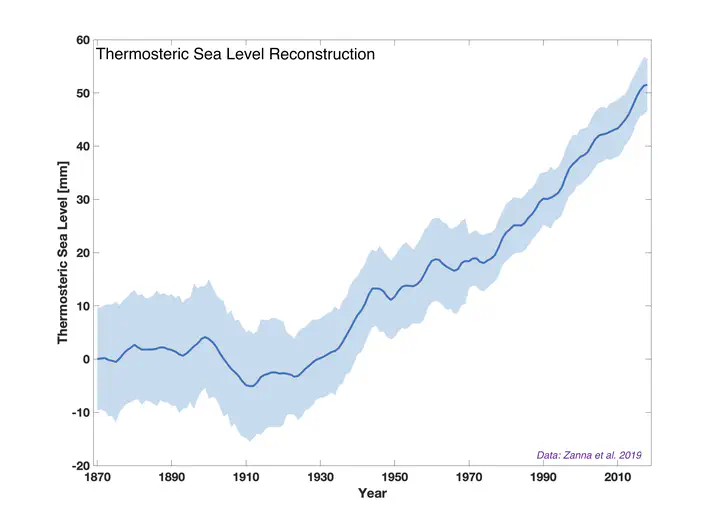Sea Level

🚧 We are in the process of adding recent work in these areas, please check back again soon for more information or check our Google Scholar page for recent publications 🚧
As anthropogenic emissions increase, the temperature of the planet increases. As a result, ice melt and thermal expansion of the oceans leads to sea level rise. Regionally, sea level changes due to local forcing from the atmosphere, changes in ocean circulations, and ocean bathymetry. We are interested in several aspects of sea level dynamics such as:
How predictable is sea level dynamics on seasonal to decadal timescales? (e.g., Fraser et al, 2019, Zanna et al. 2018)
Which dynamical drivers dominate sea level change on the continental shelves? and how these signals relate to change in the ocean interior? (e.g., Ponte et al. 2019, Fraser et al, 2019)
What drives the uncertainty in projections of thermosteric sea level change? (e.g., Huber and Zanna, 2017, Carson et al., 2019)
How does ocean dynamics shapes patterns of regional sea level? How does natural variability masks anthropogenic signal of regional sea level? (e.g., Zanna et al. 2019, Carson et al., 2019)
– How sensitive coastal surges are to atmospheric forcing? (e.g., Wilson et al. 2013)